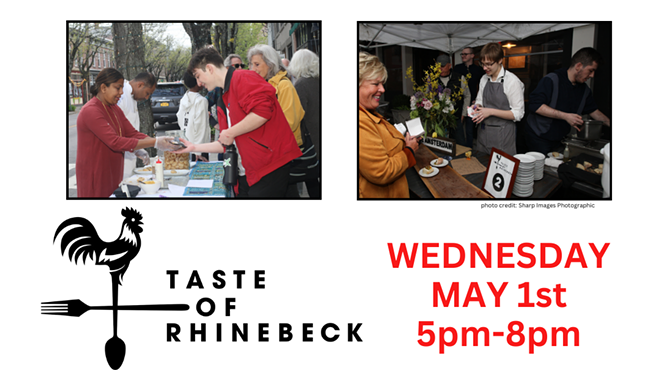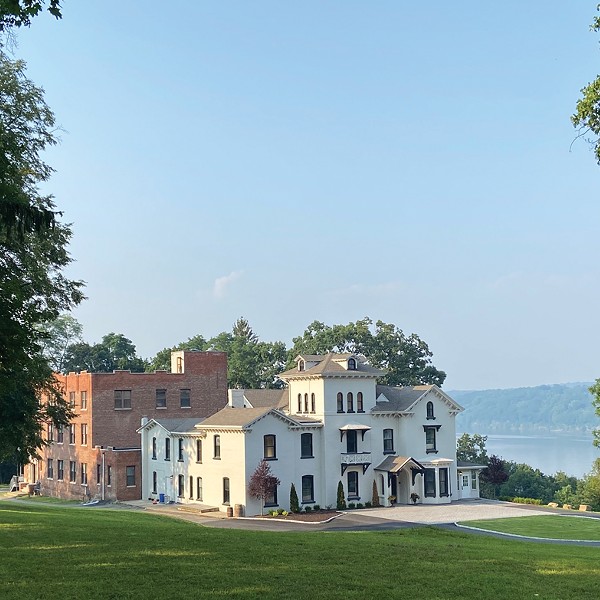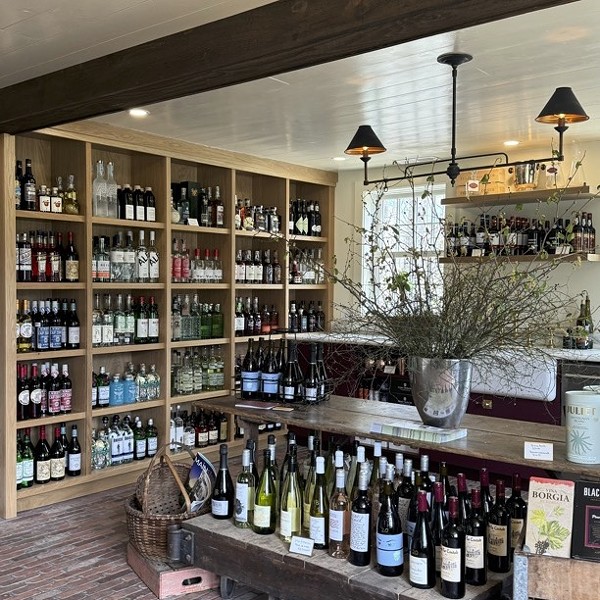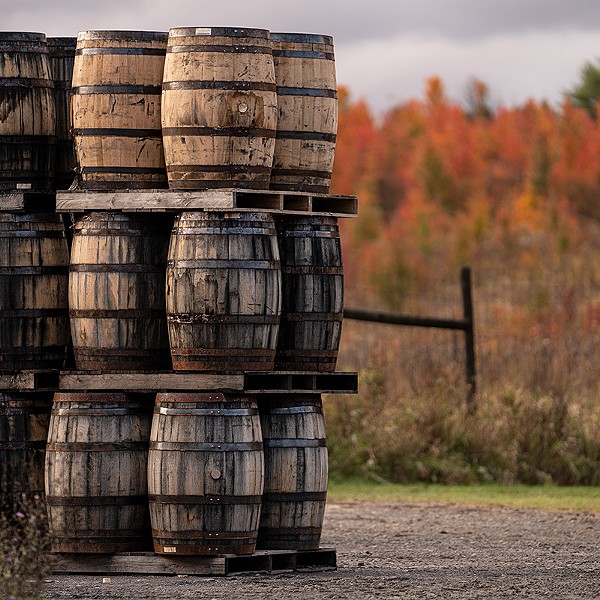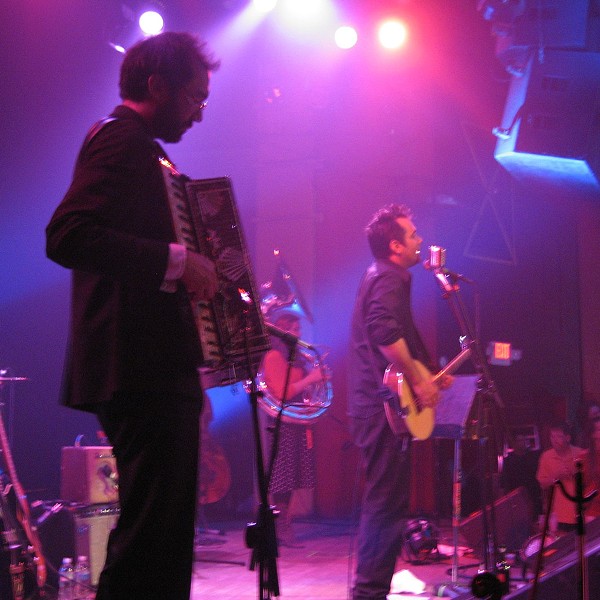Osborn lobbied early on with Erenzo to change the laws but left that loop around 2010; finally, in 2016, the laws changed so that a winery and distillery could coexist, helping spur Osborn to start producing spirits: vodka, brandy, whiskey, and gin.
"Even though distilling is capital-intensive, we had amassed some capital in the business so it wasn't as much of a stretch," says Osborn. "And by waiting the 10 years it allowed us to see 'Well, what does the customer really want?', and it allowed us to do that."
Osborn is excited about the brandy as he uses local fruit for varieties, while Erenzo touted brandy and its variants as the next frontier in beverage production, primarily because the state has such a wealth of apples. New York is the second-largest apple-growing state in America, accounting for 29.5 million bushels of apples annually, and the Hudson Valley ranks second among regions in statewide production, at around six million bushels. All of those apples means a lot of potentially discarded apples, and Erenzo sees potential for distillers. His son Gable Erenzo, founder of Gardiner Liquid Mercantile, is working with a fruit farm to make brandy out of otherwise trashed apples; he thinks all local distillers and farmers should make the same connection.
"It's incumbent with all the fruit growers in the state to hook up with their local distiller, and whatever they're not turning into their final product can be distilled into a spirit," says Erenzo. "And even wine or cider that's just not quite right—it doesn't meet your standards, so you would otherwise dump it—you can take that back and make it into a brandy, and increase its value rather than throw it away."
As for cider, leaders in the local scene are hoping to boost its reputation on a national scale.
Ryan Burk, head cider maker at Angry Orchard in Walden, comes from Western New York, the largest region of apple growing in the state, home to Mott's and big apple juice, which relies on the inexpensive Northern Spy and Golden Russet varieties. But Hudson Valley land is pricier, and apples here reflect pricier grocery industry demands, and those varieties aren't the best for cider production. Burk says he'd like to change that reality, bringing those interesting cider varieties downstate while still responding to demands driven by the cost of land.
"That's the thing we're working on now as an industry—to try to get people to understand that there can be two streams of juice," says Burk. "It's one of the reasons the Hudson Valley can be a great player in the cider industry: There are expert growers, with great growing conditions, that understand the value of fruit."
Angry Orchard chose the Hudson Valley, specifically Crist Brothers Orchards' 50 acres in Walden, because of the area's growing conditions and there being a partner willing to change his direction to supply the country's runaway leader in hard cider production. According to a 2014 study, Angry Orchard, which is owned by the Boston Beer Company, accounted for 56.8 percent of all hard cider sales. While having the big boys in the backyard has brought some backlash from other producers, Burk says Angry Orchard is working to boost production throughout the valley. For example, they've opened up their on-site cider lab to smaller producers, and they're working with Glynwood in Cold Spring to redistribute bittersweet cider fruit. In fact, Glynwood sponsors a local cider week, and in 2017 it created Ciders of the Hudson Valley, an effort to promote local cideries in an effort to boost the region's cider output as comparable to Napa Valley's wine culture.
The work Glynwood and Angry Orchard are doing, along with Cornell Cooperative Extension through its research orchard in Highland, are designed to push the Hudson Valley's cider culture as far as possible, but the challenge remains getting people on board with understanding cider.
"The cider industry at large is at a place where it's not sink-or-swim time, it's educate-drinkers time," says Burk, comparing this moment to craft beer just after its bubble burst around 1995. "People got their shit together and started to make real high-quality drinks and educate the people they're selling it to. Our industry won't grow until we start telling people how and when to drink cider, what cider is and where it comes from."








